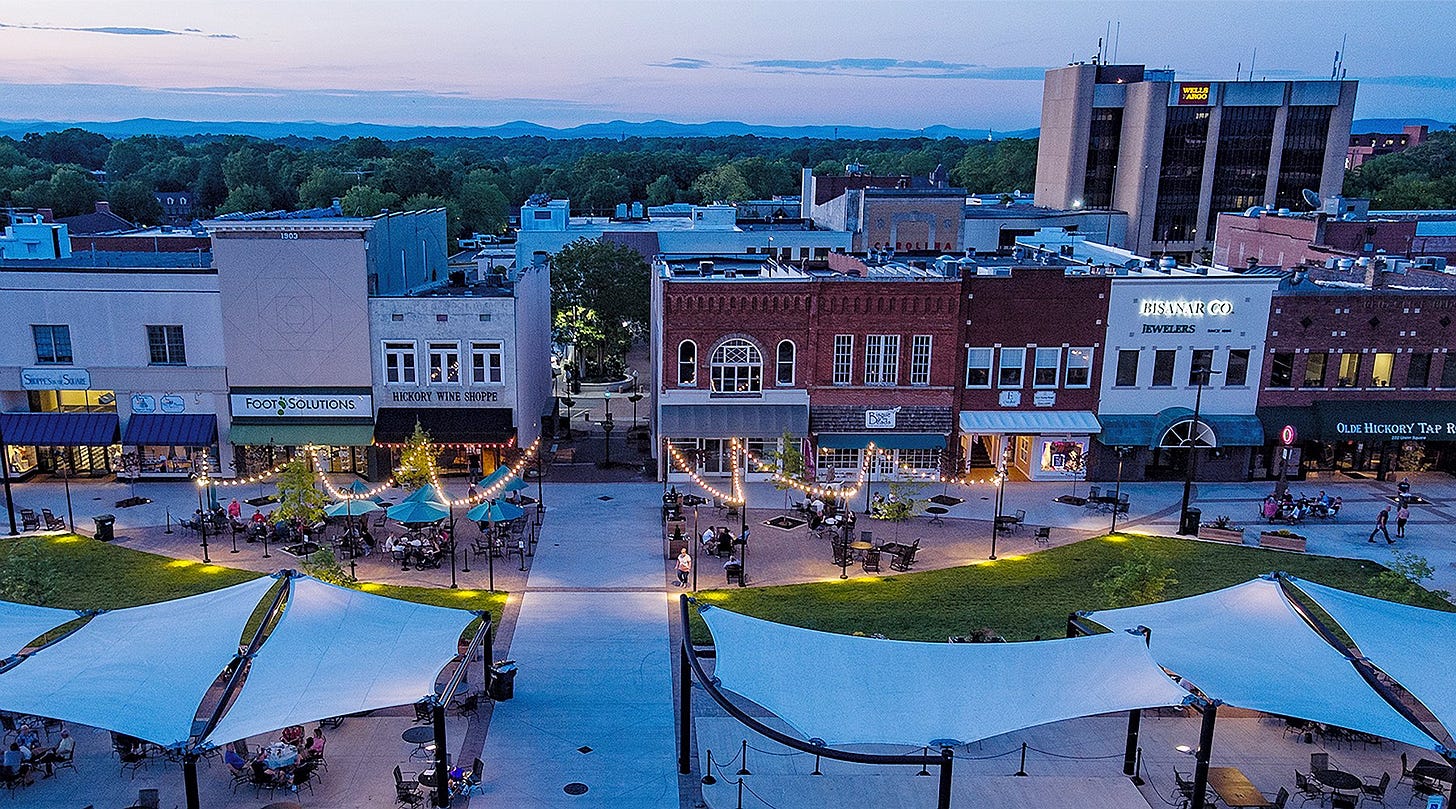Small-Town Walkability
Cities don’t have to be big to make impressive strides toward connectivity
Written By Adeleine Geitner
Driving down US Highway 321 between Lenoir and Lincolnton, North Carolina, the stretch of freeway that cuts through the City of Hickory doesn’t exactly stand out from the typical American “stroad”-scape. The road’s scenery consists of a handful of used car lots, single-story strip malls, and a Waffle House. Except for the brief reprieve offered by a bridge crossing over Lake Hickory, you could mistake this length of pavement for any other expanse in the South similarly dominated by cars. This past month, however, the nondescript thoroughfare received a landmark that signals more clearly what goes on in Hickory.
Namely, a pedestrian bridge displaying the city’s name in bright white letters was installed across 321, calling attention to a critical (and literal) stepping stone in Hickory’s forthcoming Aviation Walk. With a target completion date of October 2023, the bridge will soon offer pedestrians and cyclists an easy path to destinations like the Crawdads stadium, which hosts Hickory’s Minor League Baseball team, and, beyond that, the recently finished Hickory Aviation Museum.
But Hickory’s efforts to connect residents doesn’t end with the Aviation Walk. Thanks to a 2018 federal grant, the small city of 41,000 is building out an impressive series of accessible walkways, collectively named the Hickory Trail. The central piece of the project, the City Walk, is already in place. Following the railroad tracks, the City Walk currently connects Lenoir-Rhyne University to downtown Hickory’s Union Square. From there, the walkway will extend through a former industrial area of the city, which is working with local artists to establish a bona fide arts district, before continuing down and connecting to the lakeside River Walk. Branching out from the downtown stem of the City Walk, the Historic Ridgeview Walk will create vital connective tissue between the city’s historic Ridgeview community and nearby amenities.
According to the City, the aims of the Hickory Trail and accompanying bond program are to “increase quality of life for residents and spur economic revitalization” by “providing pedestrian and bicycle connectivity throughout the City.” Anyone with a background in urban planning will not find this mission unique or surprising. But it’s notable because Hickory is a far cry from the Portlands and Denvers that are often seen as examples of so-called “progressive” walkability initiatives. A southern furniture city that took a big hit when manufacturing moved overseas, Hickory has spent the past few decades seeking a new spark.
Through building for walkability, Hickory has found just that. And they’ve done so not by looking outside for answers but by connecting and strengthening the communities within. New local businesses are popping up along the Trail, including a music venue and a coffee shop, with more to come. In a move based not in progressivism but practicality, Hickory is demonstrating to former manufacturing cities throughout the South that walkability works.
Adeleine Geitner is the Duke Initiative for Urban Studies Fellow on Sprawl Repair and Nodal Development.



